Thermal body temperature cameras are being enlisted to assist in the battle against the COVID-19 epidemic, with government, commercial and industrial end users eager to implement BTM technology to detect elevated body temperatures that may indicate fever.
While thermal body temperature cameras can’t detect a virus, if installed and used correctly, they can detect elevated body temperatures in public and private spaces in a rapid, non-invasive way, alerting security and healthcare teams to the need to re-test scanned subjects for illness in a way that does not slow foot traffic.
But before we go further, BTM devices need to attain Australia’s Therapeutic Goods Administration listing as Class IIa devices, which is the same classification as hands-free digital thermometers – check this TGA link as part of your considerations. It matters not that very few digital thermometers available for sale in Australia are actually TGA-listed – you’ll still need make sure your BTM system is TGA-classified.
There are important elements to consider from the point of view of integrators and end users. Central, is that the most accurate measurement target in humans is the canthus – the inner corner of the eye. This means the most accurate measurements demand a clear view of the canthus, careful targeting, lower screening numbers and implementation of secondary medical procedures should elevated temperatures be detected. Also important is a controlled internal environment.
Operationally, it’s important that BTM cameras can see the forehead or corner of the eye – that means no hats or glasses can be worn – and BTM cameras should be placed no more than 2 metres away from subjects. Security teams must also be sure the environment has no strong light sources, sunlight or people not being tested in it. Further, people who are asymptomatic – that might include a large number where COVID-19 is concerned – may not show an elevated temperature.
Because these cameras are measuring skin temperature, not core temperature, expect false positives and integrate this expectation into procedures. Also, be sure the display mechanism is sufficiently subtle to show slight temperature differences.
Controlling the environment is vital – you need temperatures between 18-24 degrees and make sure the equipment you select has a noise equivalent temperature difference of 50mK – that’s 0.05C – and a spectral range between 7.5 and 13 microns. You also want low latency in the image stream and higher resolutions. The standard relating to the use of thermographic cameras is ISO 13154 – make sure you’re across it before you apply this technology to your site.
Be aware BTM camera ‘thermometers’, which have generally been designed and manufactured to check temperatures of plant equipment or warm bodies against a cold external background, are not a magic bullet for virus detection. When it comes to COVID-19 detection, only a proper medical test can establish infection. What this means is that BTM camera stations must be supported by proper medical procedures that can swing into action to assist subjects with professional medical assistance immediately after elevated temperatures have been detected.
According to Simon Cao of Dahua Technologies, the attraction of BTM cameras during the COVID-19 epidemic is a that it represents a fast, hands-free method of checking general health.
“Common methods of temperature measurement are mercury thermometer, forehead temperature gun, and ear temperature gun,” Cao says. “They all require close contact with the person being measured, which makes the measurement speed slow. During an outbreak of infectious disease, direct contact between people can also cause cross infection. Meanwhile, in public places, the flow of people is large, and a slow detection speed can affect the entire traffic efficiency.
“Dahua’s BTM solution has advantages such as long-distance detection, high accuracy, non-contact and fast detection speed. This effectively avoids cross-infection caused by human contact, saves manpower and material resources, and guarantees efficient passage of people. It is suitable for preliminary screening of human body temperature in public places during the epidemic prevention and control period.”
While BTM cameras obviously can’t provide a medical test, would Cao argue that early detection of elevated body temperature offers security and healthcare teams a useful tool in the fight against COVID-19?
“The Dahua solution carries out preliminary and rapid screening, and it’s up to security and healthcare teams to then use medical temperature measuring equipment to re-check subjects with temperatures greater than 37.3 degrees,” Cao says. “BTM cameras are an early detection tool for identifying of potential cases that allows security or healthcare teams to put into effect their emergency response plans as quickly as possible.
“Certainly, every customer needs an emergency action plan to slow down the spread of infectious disease. We provide the technology to automate high temperature detection to help security teams to identify and alert medical experts to take over.”
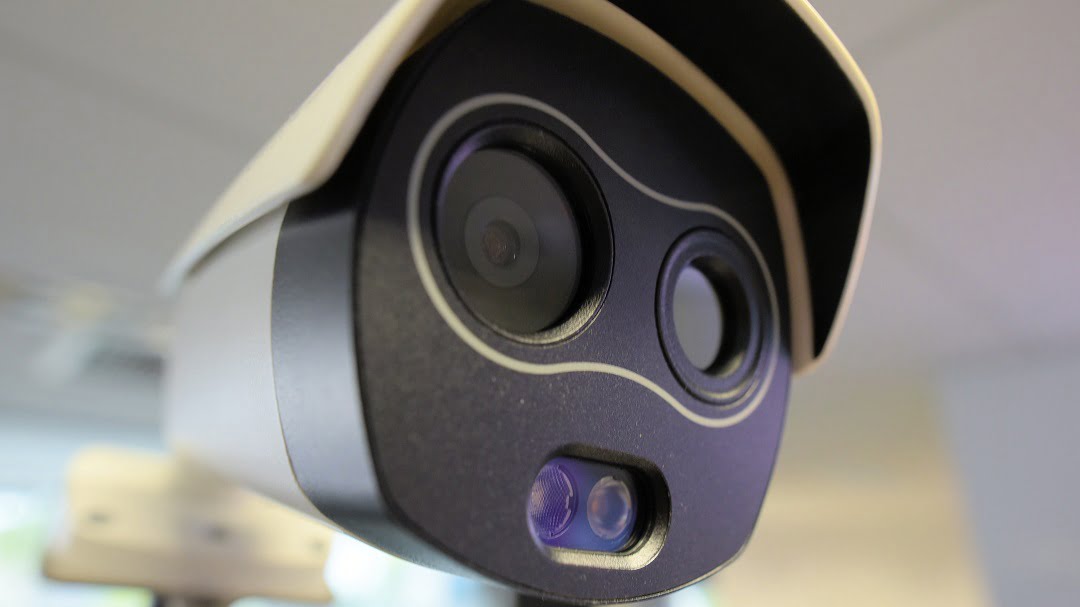
According to Cao, the key Dahua BTM features include fast, zero-touch temperature detection with up to 15 people in the FoV within a 3-metre distance, high accuracy of ±0.3 degrees, automation of alerts, face snapshots with high temperature detected, playback function and ease of deployment.”
How challenging is setting up a BTM camera stations and what are some of the key considerations when it comes to ambient temperature, range from lens to subjects, etc?
“It’s very simple to deploy a BTM solution – it shouldn’t take more than 1 hour to complete the installation,” Cao explains. “The key physical aspect of setting up the equipment with the thermal camera at a height of 2-metres, the thermal blackbody at a height of 1.8-metres and distance between the 2 units is 3 metres. The purpose of the blackbody is to provide a constant 35-degree temperature reading to the AI software. If all those aspects of setup are completed, then the FoV is always the same and only some adjustment is required for the blackbody and the detection zone.
“Once the setup is complete then maintenance requirements are low, though something to bear in mind is that because this solution is portable and mobile, the blackbody may not be properly aligned after it’s moved and some adjustment might be required.”
According to Cao, a camera display is completely optional even though it will provide visible pop-up alerts to the operator.
“Some customers may only want to have the built-in LED light and siren on the camera which will only show and alarm when high temperature detection is triggered,” he explains. “This setup is perfect for an end user that does not have a security team and where the system is being managed by the reception staff. If a staff member has an elevated temperature, they can be directed to attend a healthcare facility and to self-isolate.”
A question certain to occur to users and integrators is whether higher resolution is better when it comes to BTM cameras, or whether the close range makes resolution less of an issue than it would be with an optical camera.
“The main purpose is to detect high temperature and the detection zone is 3 meters from the camera for ±0.3-degree accuracy, so the resolution of our camera is more than sufficient,” Cao says.

When it comes to the sort of operations best suited to the use of BTM cameras, Cao says these include essential services that keep our economy operating, including critical infrastructure, banks, airports, railway stations, hospitals, schools, corrections, clinic, ports, logistic centres, construction, etc.
“We are receiving interest from banking, corrections, airports, mining, construction sites and hospitals, all of which are currently investigating BTM as an option to control and slow down the spread of COVID-19.”
Might BTM cameras be integrated into VMS solutions in the future, with alerts sent to security teams and/or notifications sent to staff alerting them to elevated temperature and encouraging them to seek medical advice, in Cao’s opinion?
“The Dahua BTM solution is already integrated with our own DSS Express VMS and email notification with Snapshots is possible,” Cao explains. “VMS developers including Milestone and Genetec are already our development partners so the system can be managed in that way, too.”
According to Tom Kinkade of Sektor the interest in elevated body temperature cameras generated by the COVID-19 crisis is justified.
“Elevated body temperature (EBT) cameras, technically referred to as a ‘screening thermograph’, were first deployed for coronavirus fever screening during the SARS outbreak back in 2003,” Kinkade says. “They were also successfully utilised during the second coronavirus outbreak of the 21st century, MERS, during 2012. Technology has developed significantly over recent years and we expect EBT cameras to be a powerful tool in the mass screening of individuals for fever during the novel coronavirus (COVID-19) pandemic of 2020.”
Kinkade argues early detection of elevated body temperature offers security and healthcare teams a useful tool in the fight against COVID-19.
“Yes, EBT can provide a powerful early detection tool, if implemented correctly,” he says. “The International Organization for Standardization released ISO 13154 to detail how screening thermograph can be used effectively. It summarised the key learnings from the SARS and MERS pandemics.
“One of the key requirements is that the camera must measure the temperature of the region medially adjacent to the inner canthus of the eye – the inner corner of the eye near the tear duct. This region is directly over the internal carotid artery.
“Further, EBT cameras can only measure the temperature of the surface of the skin and the canthus is the only area of the body that provides stable measurements. The face, chest or limbs do not provide a good indication of body temperature.
“So, there are many considerations in order to get reliable data and readers can visit www.imcontrol.com.au/white-papers/best-practices-for-ebt/ for a summary. One of the key requirements is that the face and eyes of the individual are not covered by glasses, etc.”
The key BTM camera features supporting this functionality, according to Kinkade, include temperature accuracy and pixel resolution.
“When it comes to pixel resolution, the ISO standard calls for a pixel resolution of no less than 320 x 240 pixels,” he explains. “With this resolution, the face of the individual must cover at least 75 per cent of the width of the image. This means that at the level of the face, the camera must have a pixel size of no greater than 1mm x 1mm. Ideally a camera with 640 x 480 or greater pixel resolution will be used.
“Measurement accuracy and repeatability – the absolute measurement accuracy and the measurement repeatability should be within no more than a ±0.3 degrees C tolerance. There are very specific requirements for the camera and supporting hardware outlined in standard IEC 80601-2-59:2017. The system should be able to provide an alarm indication, reducing the requirement for the display. Also important is an area where the flow of individuals can be confined to a single stream, so that the EBT camera can get a close image of each individual’s face.”
How vital is it that procedures be implemented that allow medical teams to take over in the event a staff member is found to have an elevated temperature?
“This is critical,” Kinkade says. “The EBT camera is only providing a preliminary detection, this needs to be verified by appropriately trained personnel. If the organisation has purchased equipment that is fit for purpose and appropriately calibrated, the task of using the EBT camera should be straightforward, however, appropriate training should be provided at the time of system commissioning.
“Primarily the users need to be proficient in recognising proper alignment and positioning of a person within the image and able to recognize common system problems or faults. It is important to also understand the processes and protocols for dealing with a positive elevated body temperature detection.
“Users interested in this technology include food processing and handling where there is a causal workforce and high business risk in the event of a positive detection,” says Kinkade. “Other interested organisations include prisons, which are high risk due to high density living quarters, mine sites which combine high value assets and large workforces, and aged care facilities thanks to the particularly high risks to the elderly from COVID-19.”
According to Kinkade, EDT cameras are ideal for integration into existing VMS solutions.
“It is highly likely that EBT detection cameras will be built into and integrated with staff sign-on systems, similar to the way alcohol and drug breathalysers are integrated today in high security applications,” he explains. “Institutions such as aged care facilities, where there is the perpetual threat of influenza infections, are another likely candidate for this type of technology.
“Finally, this is obviously a hot topic at the moment, and there are a lot of manufacturers and sales brochures making claims that are irresponsible, in my opinion,” Kinkade says. “Screening for EBT is not a new field of expertise. There are international standards for methods and hardware. All prospective customers should be directed to finding a product/service that meets ISO 13154 and IEC 80601-2-59:2017.”
According to Andrew Cho of EOS Australia, which distributes the Sunell BTM solution, current interest in such solutions is justified in some applications.
“Properly installed and managed, BTM solutions that allow contactless measurement at a safe distance without a need to stop the traffic flow deliver a great advantage to users,” he explains. “There are many applications in which a BTM solution can be implemented to prevent the spread of the contagious disease by early detection.
“Fever is the most common symptom with COVID-19 – the early detection of elevated body temperature using the BTM solution provides another layer of safety by preventing the risk of cross-infection, as it’s a contactless solution.
“BTM solutions have already been used in the Middle East and in Asian countries during the outbreak of MERS and SARS in the past. With the latest development of AI technology such as face recognition, functionality has advanced performance and accuracy of the temperature measurement.”
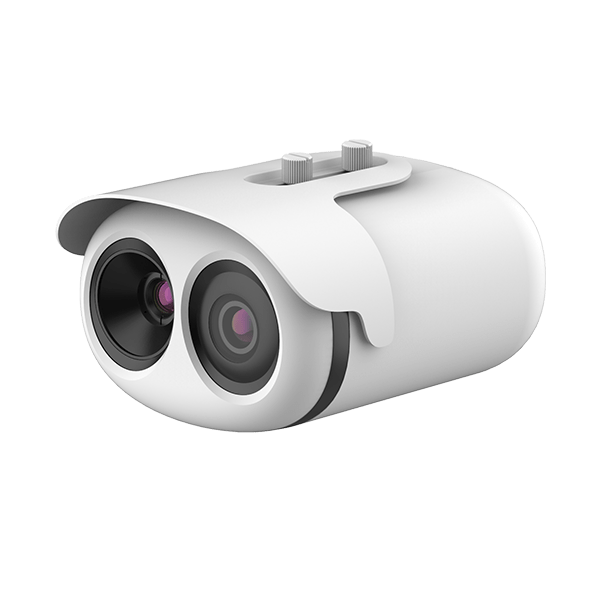
When it comes to the Sunell solution, Cho says a combination of face detection and thermal detection minimises the false detection of high temperature that could be generated by the other heated object in the scene.
“Also, the Sunell CMS software has facial recognition function to help identity/track people shown to have elevated body temperature,” he explains. “Another key feature is an ability to detect/measure multiple people at the same time, and the BTM-T5 allows up to 16 people to be measured at a time with the response of 30ms.
“The direct alarm relay output from the camera also ease the connection of alerting equipment such as the strobe light, and the siren at the checkpoint instead of involving the VMS or other platform to drive the event action.”
According to Cho, the Sunell BTM solution is simple to install.
“There is a detailed guideline for installation and programming that needs to be carefully followed, and to minimise false alarms caused by the ambient temperature, the solution must be installed in an indoor environment and maximise the accuracy by calibrating with a thermal blackbody. Also, we use 8mm thermal lens to provide a wide FOV to cover more area.
“The display is essential. While the thermal camera is measuring the body temperature, operators must be able to visualise the person they are monitoring to identify the person with an elevated temperature. Also, a public display for the people being measured can provide a peace of mind to the visitor that the site is well under control, while at the same time increasing alertness of the disease.
“Higher resolutions allow the temperature to be measured at a longer range, so higher resolution is more useful in comparison to a lower resolution model,” Cho says. “Thermal cameras also require good WDR performance when used in an environment with backlight such as in glass foyer or near an entrance door. 2MP resolution is the well-balanced resolution to provides adequate pixels to detect the face, and strong WDR performance to handle the backlight.”
According to Cho having procedures that can be implemented that allow medical teams to take over in the event a staff member is found to have an elevated temperature is important.
“Our recommended procedure for the person detected elevated temperature is to take another measurement with the BTM camera after 5-10 minutes,” he explains. “If the 2nd measurement also displays the elevated temperature, we then recommend measuring with the electronic thermometer before proceeding a medical team undertakes further examination.
“Our recommended setup is to have an operator monitoring the scene using the CMS software near the area where the BTM camera is operating for fast response upon detection of elevate temperature. However, as our CMS supports server and client architecture, it is possible to have a central monitoring setup and communicating with the field operators to respond to the elevated temperature alert. There is also an app available for mobile monitoring.
“Managing a BTM station is not a complex – just another layer of the security check. The setup and operation are simple and the process of managing a BTM camera station is simple; all it requires is setting up a monitoring process and creating and administering operational procedures once the person with elevated body temperature is detected.”
“Sunell already has a mature CMS software as well as the APP to provide the different type of searching and alerting features. Sunell and EOS Australia have also semi-integrated the solution with WISENET WAVE VMS, so it can be used as a recording platform, as well as triggering event alerts in the VMS upon detecting elevated temperatures.”
There’s plenty of interest in the Sunell solution.
“Unlike the other manufacturers who released the solution after the COVID-19 outbreak, our solution was initially developed to be used to detect the fever in the educational sector,” Cho says. “However, after the outbreak, almost every type of business or organisation has shown interest.
“Essential businesses that require extra attention to the safer environment such as logistics, manufacturing facility, aged care, hospitals, transportation, schools, customs, airport, mining and more. However, when situation eases, and non-essential businesses re-open, we foresee the need from those businesses for BTM solutions, as the potential threat of 2nd outbreak of COVID-19 still exists.”
Uniview’s Edward Qiu says the interest around BTM cameras is justified.
“Many cases in China show quick screening of abnormal temperature by BTM cameras in crowded area is an effective way to fight against the outbreak of COVID-19, which can largely reduce manpower cost and risk of cross infection for medical and security staff,” Qiu says.
“As a preliminary screening tool, a BTM solution can reduce medical staff’s workload and accelerate measurement process, which can efficiently address the insufficiency of medical staff and security staff in such epidemic period. China’s successful experience in fighting against COVID-19 shows the significance of BTM cameras.
“The technology can ensure the efficiency of temperature measurement to avoid crowded condition in scenarios with large flow of people, meanwhile, any abnormal temperature targets will be tested by medical staff again to prevent any missing of potential patient. Also, OET-213H-BTS1, the face recognition temperature measurement terminal from Uniview, can be applied in scenarios like schools, communities, enterprises, and construction sites to monitor the temperature condition of staff daily.”
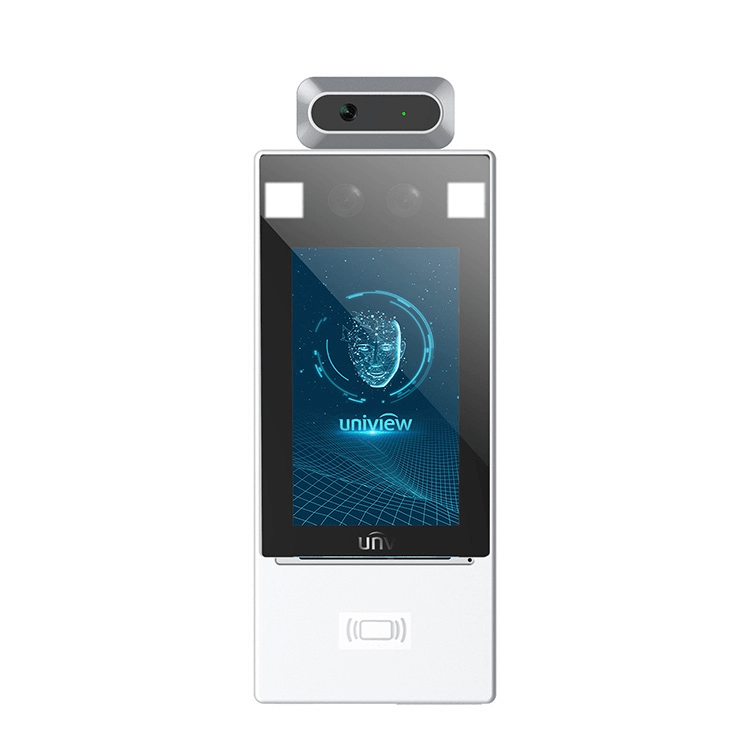
According to Qiu, key BTM camera features include the ability to offer non-contact temperature measurement, a measurement deviation less than 0.3 degrees and the capacity to deliver multi-target temperature measurements simultaneously.
“Uniview’s BTM camera station is easy to deploy,” Qiu says. “Considerations include ensuring ambient temperature and humidity are stable without air currents from air conditioning, ventilation sources or high-power outlets. A BTM solution should not be installed opposite an entrance/exit door or facing a mirror or a direct light source. Further, the body temperature screen and the blackbody must be installed on the same side to avoid obstruction with the blackbody. There is no requirement for a dedicated display – there is a built-in speaker for voice alarm. A display does allow live view and an alarm snapshot.
“When it comes to resolution, higher thermal resolution can enhance stability and sensitivity of measurement and reduce measurement deviation, while higher visible resolution offers higher performance on face capture. For different BTM camera solutions, different distance between target and lens is required – sticking to the recommended distance achieves the best results.
“Obviously, it’s vital to let a medical team deal with such event in order to double confirm abnormal temperature cases quickly and find people who need to be isolated. Many cases show the immediate treatment of any cases of abnormal temperature can effectively control the spread of the COVID-19 epidemic.”
The sort of end user operations best suited to the use of BTM cameras are those with a large flow of people, according to Qiu. “The scenarios with large flow of people is more suitable, like airports, train stations, banks, schools, and malls,” he says.
“In such applications it’s is better to set up a simple channel to guide pedestrians through a measuring area so that the BTM camera can work without blackbody being blocked from the camera’s view. Properly set up, there’s no need for pedestrians to cooperate with measurement processes – they can just continue to walk.”

“We have found that for applications with large flows of people, customers are more interested in the TIC500/TIC600 BTM cameras, while for smaller applications, the OET-213H-BTS1 face recognition terminal is of interest. If customers also have surveillance requirement except temperature measurement requirement, CW180, the integrated wrist temperature measurement system, can cause more interest.”
“The system is easy to operate and manage. When installed correctly, you just need to configure parameters and set alarm rules, and then when voice alarm is triggered, check abnormal temperature targets and implement medical procedures.”
According to Hikvision’s Cecil Nie, many organisations are scrambling to find ways to protect staff and customers during the COVID-19 crisis.
“BTM camera, with the ability to detect elevated skin-surface temperature efficiently, are one of the most useful tools to help protect people at the moment,” Nie says. “This is because early detection and isolation has proven to be the most effective way to control the virus outbreak.
“A BTM camera can’t provide a medical test – when elevated temperature is detection security and healthcare team need to confirm the reading and action procedures to ensure professional medical testing is made available – all this needs to be handled efficiently and in a way that is safe for BTM system operators.”
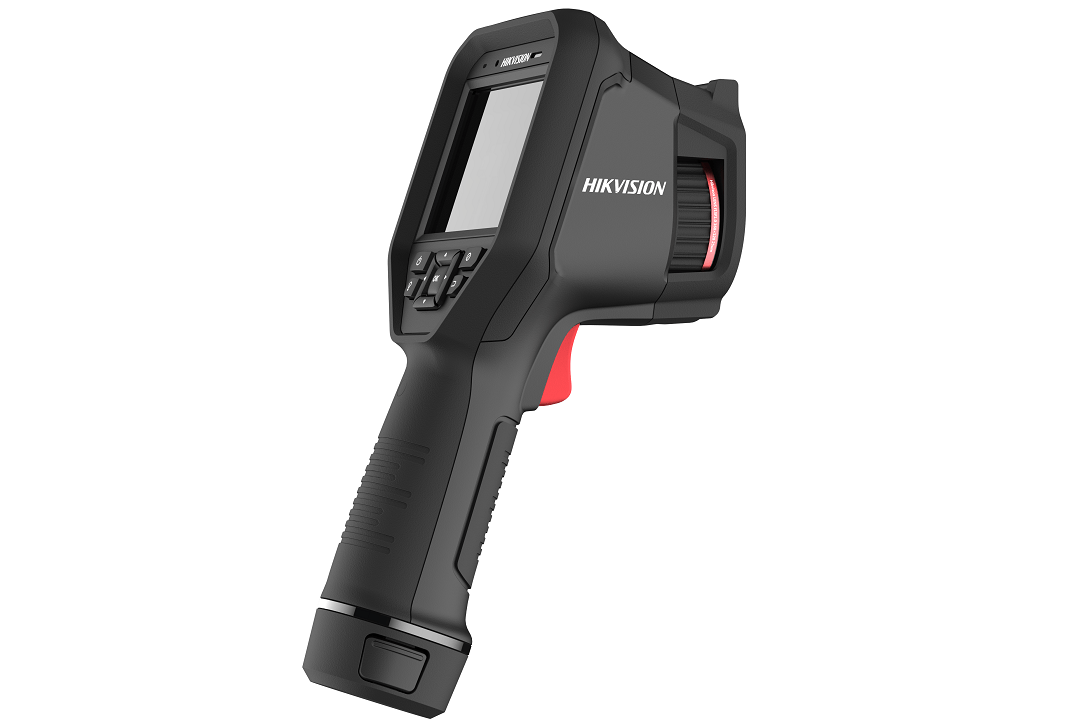
Nie says functions that support the temperature measurement process include instant and efficient no-touch temperature measurement that significantly reduces the risk of cross infection.
“Setup is not complicated, though given the nature of thermal cameras, a few tips need to be taken into consideration,” Nie explains. “You need an indoor environment with stable ambient temperature, you must pre-heat the device before use, avoid crowded backgrounds, and ensure there are no heat sources or high air flows in the scene. Something else is to try to measure temperature after the body returns to its normal temperature, rather than measuring when people have just come inside from outside.”
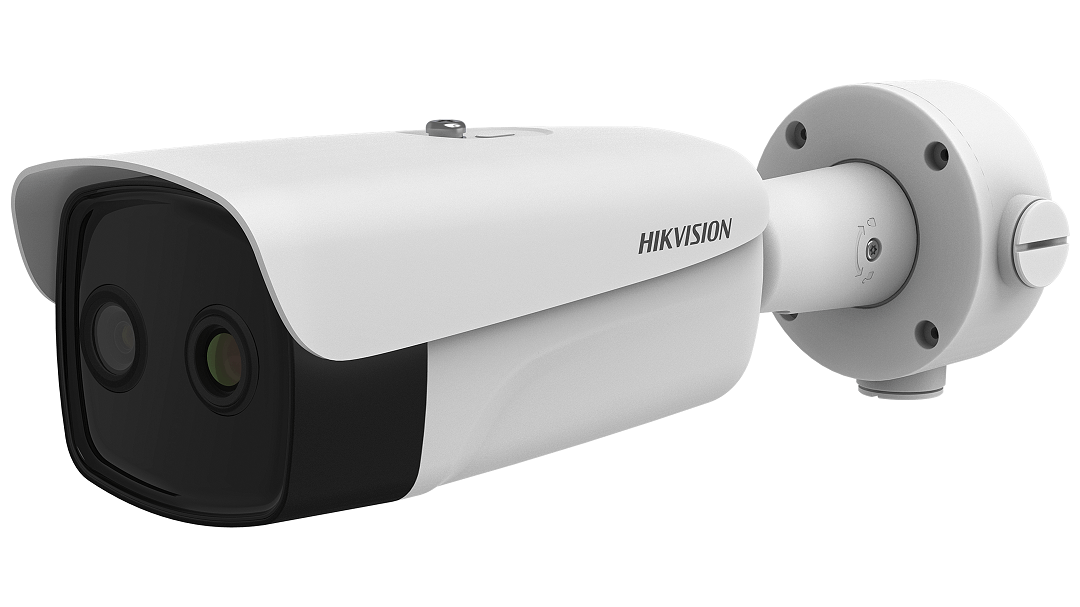
A key difference between a thermal camera and traditional thermometer is that a thermal camera could provide temperature readings alongside visible faces, so it’s possible to link an abnormal temperature to a particular person, who can then be tested a second time by medical teams and instructed to self-isolate if required.”
According to Nie, the sensor resolution and focal length are what defines the detection range of a BTM solution.
“A lower resolution sensor with a shorter lens (wider angle of view) will be most effective at closer ranges in applications with less traffic,” he says. “High resolution sensors with long lenses give BTM cameras the ability to scan crowds of people from a distance to satisfy group screening requirements.
“Another fact that needs to be taken into consideration is cost – compared with optical cameras, thermal is still an expensive technology and high-resolution thermal increases the cost again. Low resolution camera makes thermal an affordable solution, but applications need to take low resolution into account.”
According to Nie, the integration of BTM cameras into VMS is viable.
“Such integrations are mainly about the alarm, staff management function,” Nie explains. “The alarm function gets the attention of operationmanagement level to take prompt action, while the staff management function links health status with a staff member so medical procedures can be undertaken.”
Tiandy’s Ivan Wang says the interest in BTM cameras during the COVID crisis in reasonable.
“There is a strong demand for measuring body temperature in public places due to the COVID-19 virus and BTM cameras can meet it,” Wang says. “We think this is an embodiment of technology designed to serve society. High body temperature is an effective indicator for COVID-19 and BTM cameras can detect high temperature in a way that is fast and touchless.”
While the combination of sensor, Vanadium Oxide uncooled focal plane arrays, and algorithms are the key feature of the Tiandy BTM solution, ease of use of the overall system is vital, too.
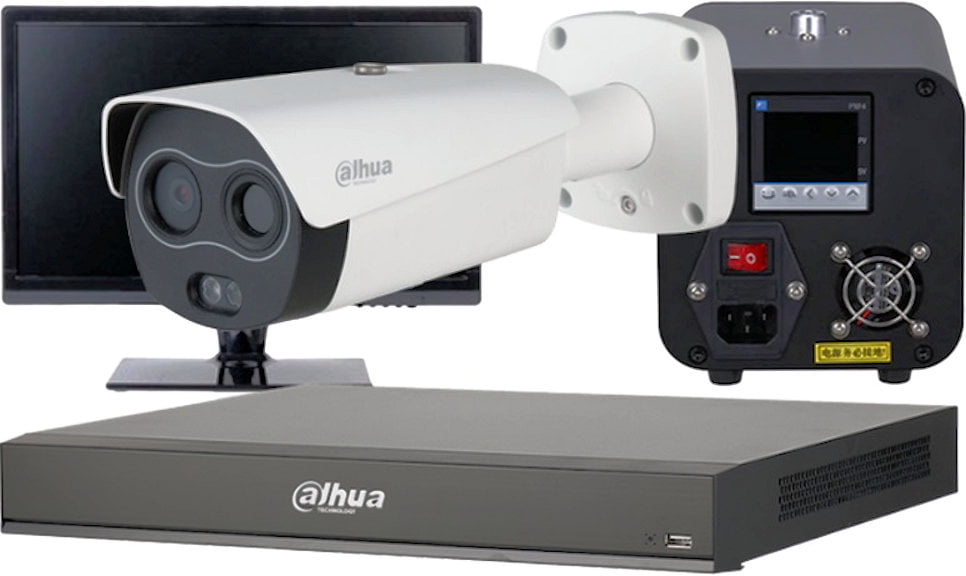
“Tiandy has worked hard to provide a body temperature measurement solution that is simple and easy to use,” says Wang. “To make sure of measurement accuracy, Tiandy’s new thermal and optical bi-spectrum network bullet camera works with a blackbody indoors at a range of around 1.5 meters.
“Operators view real-time body temperature numbers overlayed on a monitor showing the subject. With a built-in speaker, Tiandy’s thermal and optical bi-spectrum network bullet camera can also alert when the temperature reaches set value and ensure the person with elevated body temperature won’t be missed by observers.
“Our body temperature measure solution is easy to deploy, and the thermal camera can just work with the browser in a PC – when installed on a tripod, the camera and blackbody can be moved easily. It’s also possible to integrate these cameras with a VMS.”
Wang says after initial high temperature detection medical procedures should be activated to assist.
“A BTM camera solution gives early and rapid detection of a person with fever but after the initial screening, a second body temperature test is required,” he explains. “If confirmed, it is necessary for a medical team to undertake additional testing, as well as recommending the patient for isolation and observation, which is very important.
Bigger sites are best for BTM solutions, in Wang’s opinion.
“According to our experience, BTM cameras are most deployed in places with high human flow which needs rapid temperature screening, such as airports, railway stations, bus stations, campus and large shopping malls,” he says. Certainly, these are the customers we find are most interested in BTM cameras.”
#sen.news







